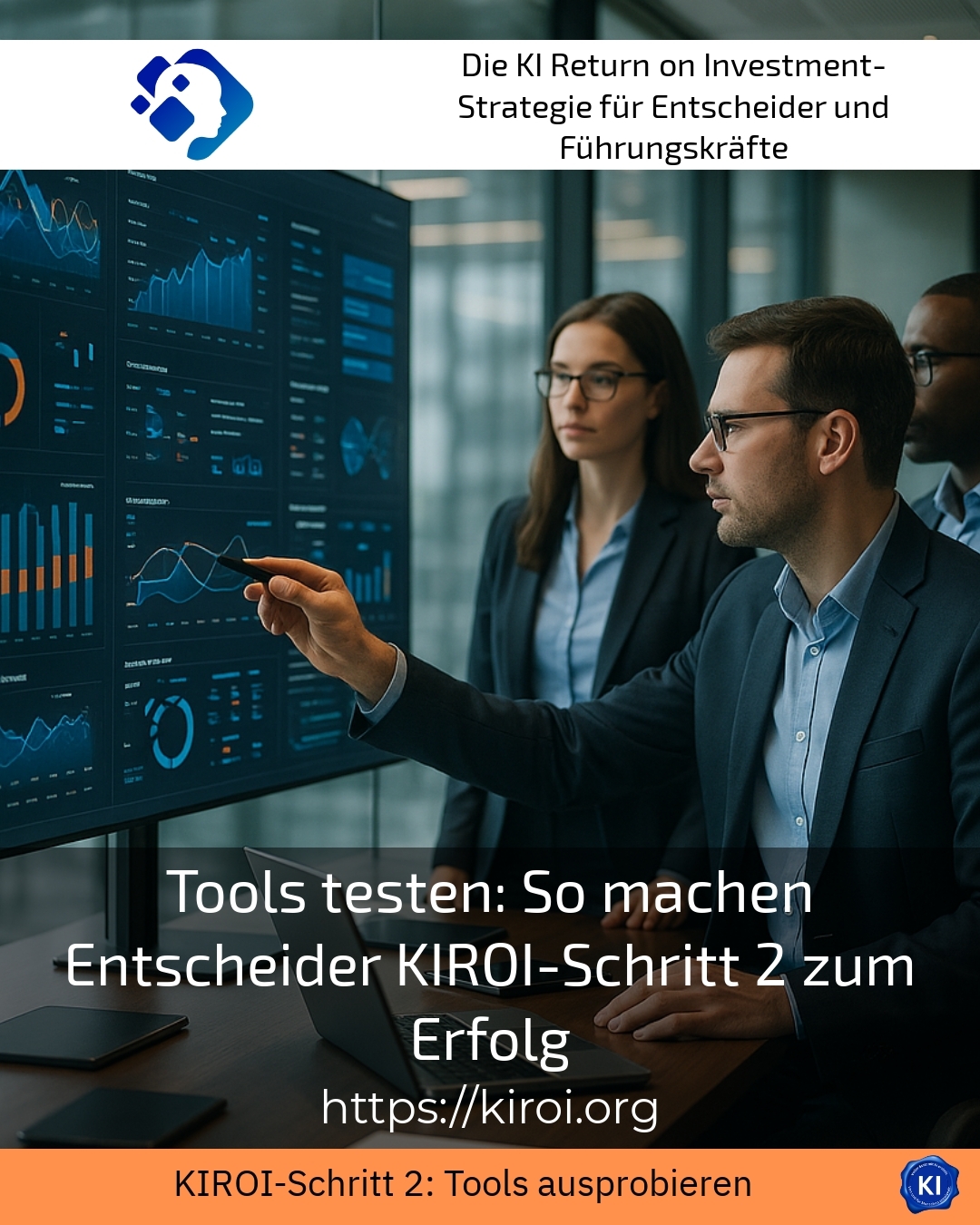The process of testing tools is a key challenge for many decision-makers when it comes to identifying the right AI tools and using them profitably as part of KIROI step 2. Only those who systematically test tools can realistically assess their added value in the company and implement them successfully. In this article, you will find out how decision-makers can test tools sensibly in order to achieve a real head start in the course of the project.
Testing tools - the core of successful decisions
Many managers are faced with the task of choosing from a wide range of digital solutions to find the one that best suits the problem at hand. There is a wide range of AI applications in particular - from chatbots and automated data analyses to intelligent assistance systems. Careful testing of tools is essential in order to make an informed decision.
For example, clients often report that they initially have difficulties in efficiently evaluating the functionalities that are relevant to them. In practice, it is advisable not only to compare tools in terms of features, but also to use them in realistic scenarios. This is the only way to recognise how they prove themselves in everyday use and which adjustments are necessary.
An example from the customer service sector shows that tried-and-tested AI chatbots often respond faster and more consistently to standard enquiries than conventional solutions. In turn, decision-makers can use these findings to support and manage the introduction in a targeted manner in order to minimise friction losses during operation.
How decision-makers test tools in KIROI Step 2
The second step of the KIROI framework is dedicated to precisely this phase: trialling various AI solutions in order to make an informed choice. Decision-makers benefit in particular from a systematic approach that is methodically supported and practical.
For example, some companies use structured test phases in which the following aspects are checked:
- How intuitive is the tool to use?
- What efficiency gains are recognisable in the processes?
- How flexibly does the system react to changing requirements?
Another important criterion is the integration of the tool into existing IT infrastructures. Clients have repeatedly experienced that supposedly powerful tools could hardly be used due to a lack of compatibility.
Insights from the sales industry also show that tools that enable seamless communication between different departments are usually more readily accepted by the team. Decision-makers can thus better support and promote key processes.
BEST PRACTICE with one customer (name hidden due to NDA contract) An AI-based planning tool that calculated several scenarios for route optimisation was tested in a medium-sized company in the logistics sector. The iterative test process enabled weaknesses in the data connection to be recognised and rectified. The support provided by transruptions coaching gave the team ideas on how the introduction could be better communicated internally in order to increase acceptance and utilisation.
Practical tips for successful tool testing
The following measures are recommended in order to organise the test process efficiently:
- Define specific use cases that the tool should fulfil. For example: Automated document creation in legal advice or analysing customer data in marketing.
- Use pilot projects with clear success criteria. Set realistic time frames for the test so that results become visible quickly and decisions are not unnecessarily delayed.
- Integrate interdisciplinary teams to include different perspectives. This will improve the quality of the assessment and promote acceptance from the outset.
When advising a manufacturer of industrial appliances, for example, the use of AI-supported fault diagnosis in the service process measurably reduced the processing time. Decision-makers tested various solutions in parallel before selecting the tool that performed stably even under real-life conditions.
Retailers also benefit from intelligent inventory analysis tools that are continuously adapted in response to user feedback. Testing on a relatively small scale makes it possible to respond quickly to challenges and gradually improve the product.
Testing tools as an integral part of the KIROI strategy
In the KIROI process, testing tools is not an isolated step, but part of a step-by-step, structured approach. It combines the analysis of requirements with practical testing and thus forms the basis for the sustainable introduction of AI technologies.
The support from experienced coaches helps to avoid pitfalls and keep the focus on the entrepreneurial goals at all times. Many clients report that this support was crucial to their subsequent success, especially in the second KIROI step.
This makes testing the tools a source of inspiration for innovation processes in the company - regardless of whether it is a question of marketing automation, customer service or operational optimisation.
BEST PRACTICE with one customer (name hidden due to NDA contract) A service company carried out a structured tool test for AI-supported text creation in collaboration with KIROI Coaches. The iterative test phase quickly showed which solutions were well matched to the specific requirements. This enabled step-by-step integration without disrupting ongoing operations and noticeably increased acceptance within the team.
My analysis
Careful tool testing is an essential component for decision-makers in order to maximise the benefits of AI applications in KIROI step 2. Practical tests allow teams to familiarise themselves not only with the technical possibilities, but also with the operational requirements. This makes the entire process more transparent and focussed. The combination of clearly defined use cases, an iterative approach and professional support provides a stable basis for successfully integrating new technologies into the company. Decision-makers can thus reduce uncertainties step by step and utilise the full potential of the tools.
Further links from the text above:
Tool test: How decision-makers master AI tools in KIROI Step 2 [2]
Tool testing in KIROI step 2: How to use AI successfully [11]
AI as an opportunity in times of skills shortages [4]
Introduction to artificial intelligence according to the requirements of the EU AI Act [6]
For more information and if you have any questions, please contact Contact us or read more blog posts on the topic Artificial intelligence here.















